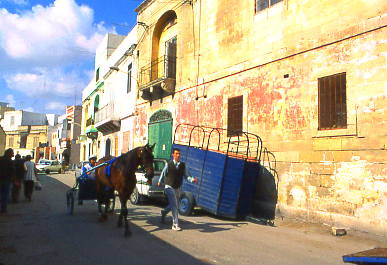
The kids and I had spent a day exploring the prehistoric temple ruins at Hagar Qim and Mnajdra, archaeological wonders built over 5,000 years ago on the island of Malta. The temples, especially Hagar Qim, were big and mysterious, built between 3600 and 3200 BC in the bulbous Ggantija style.
We were making our way back to the capital, Valletta, on a clifftop road that ran high above the sea and came to Dingli, an ochre, limestone town with a silver-topped church that, while attractive, didn't seem to offer anything special enough to warrant a stop.
Until I looked into a field and saw the ruts.
We parked and walked along what looked like ancient cart tracks. I later learned that the Dingli Cart Ruts may have been made and used by Bronze Age settlers from Sicily as early as 2000 BC. Another theory links them to more recent 7th- century BC Phoenicians, one of the many peoples who have left their mark on this island nation at the crossroads of the Mediterranean.
Our walk along the enigmatic ruts was a fitting end to a day of exploring Malta's prehistory. We'd begun the day by walking through big wonders and ended it by walking through little ones.

www.LoriHein.com








